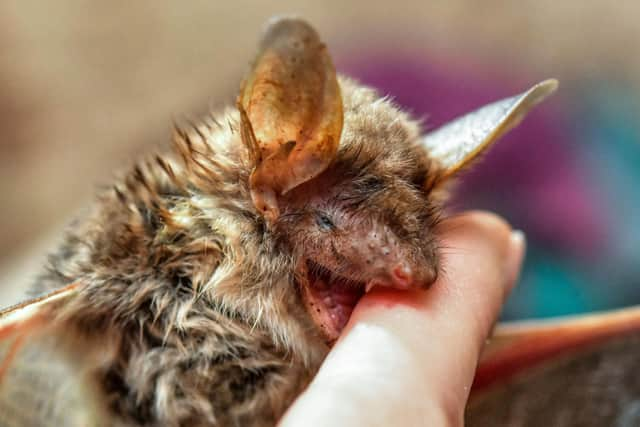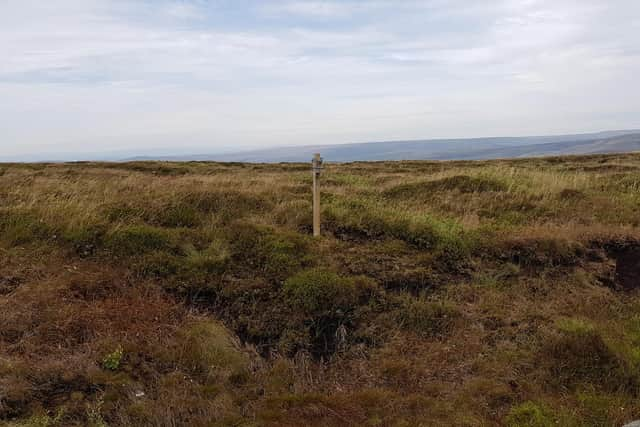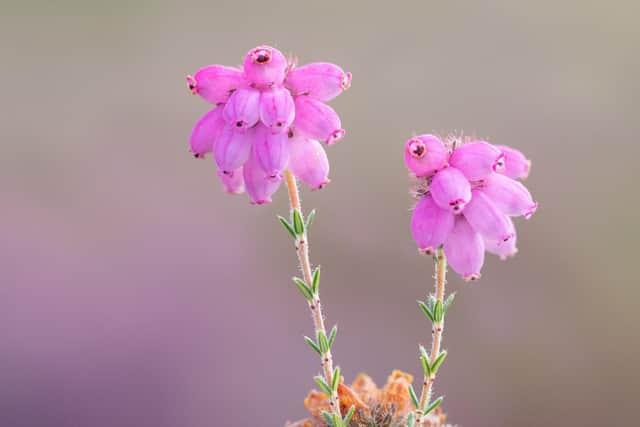Moorland conservationists celebrate first evidence of bats on Kinder Scout
and live on Freeview channel 276
Five different species of the flying mammal were recently identified on a restored area of the plateau, as part of a joint monitoring programme between the Moors for the Future Partnership and Derbyshire Bat Group.
The discovery is the highest altitude of bats ever recorded in Derbyshire – at 613 metres, just below the highest point in the county – and indicates that there are is also now a big enough population of invertebrates in the area to attract the bats which feed on them.
Advertisement
Hide AdAdvertisement
Hide AdChris Dean, head of Moors for the Future, said: ‘’Our work started 20 years ago and is far from over, however we can already see significant improvements to the habitat in our restoration areas.


“As well as the well-known and visible upland plant-life and animals, these habitats also benefit other species that take advantage of the improved conditions under the cover of darkness, such as our newly discovered nocturnal forager.”
The last few months have seen the partnership conclude conservation work under the six-year project MoorLIFE 2020, which began with around 11,000 bags of heather brash – enough chopped up heather to fill more than three Olympic-sized swimming pools – being spread on the moors to stabilise the peat.
That meant the ground was ready for nearly 3million sphagnum moss plug plants to be inserted by hand, setting off processes which have seen thriving biodiversity return to the land.
Advertisement
Hide AdBefore restoration, these landscapes were barren swathes of bare peat, and many of their common inhabitants were become rare and under threat.


Advertisement
Hide AdSphagnum moss is crucial for wildlife as the small plugs of moss help to hold more water on the moors, slowing the flow and creating a microclimate which supports particular species and gives invertebrates an important place to shelter from the harsh conditions of the moorland environment.
Growing through the mosses are lichens, shrubs and berries which are essential to species such as the violet ground beetle, green hairstreak butterfly and common hawker dragonfly and many other insects.
Insects and invertebrates are an essential source of protein for the chicks of wading birds like snipe, dunlin and curlew return year after year to nest on blanket bogs and raise their young, as well as those further up the food chain like the short-eared owl.
Advertisement
Hide AdDianna Kopansky, coordinator of the United Nations’ Global Peatlands Initiative, said: “This work by Moors for the Future Partnership to restore blanket bog peatlands across the Peak District and South Pennines is critical to show how these restoration techniques are helping not just the landscape to recover, but also enhancing the habitat to enable upland wildlife to survive and thrive.


“It is a significant demonstration of the biodiversity that these valuable ecosystems are able to support when given a much needed helping hand.”
Advertisement
Hide Ad“In these confusing and worrying times, local journalism is more vital than ever. Thanks to everyone who helps us ask the questions that matter by taking out a subscription or buying a paper. We stand together.” – Louise Cooper, editor.